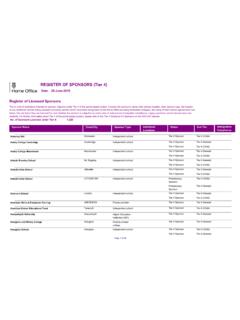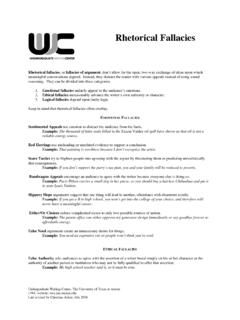Transcription of Text Structure - Hood River County School District
1 Text Structure Features & Organization What is Text Structure ? Text Structure refers to the ways that authors organize information in text. Teaching students to recognize the underlying Structure of content-area texts can help students focus attention on key concepts and relationships, anticipate what s to come, and monitor their comprehension as they read. As readers interact with the text to construct meaning, their comprehension is facilitated when they organize their thinking in a manner similar to that used by the author. Readers who struggle with text comprehension often do so because they fail to recognize the organizational Structure of what they are reading, and they are not aware of cues that alert them to particular text structures (Cochran & Hain). Obviously, all texts are different to a certain extent, but depending upon the author's purpose, the topic and the genre, reading selections tend to be organized to employ a few predominant structural patterns.
2 The following should be explicitly taught to teach students to comprehend more effectively: Structure (Organization) Fiction Non-Fiction Story Elements: Characters Setting Problem/Solution Plot Cause and Effect Sequence Problem/Solution Description Compare and Contrast Fiction texts typically have literary elements such as characters, setting, problem/ solution, and plot. Hearing stories told and read aloud helps children internalize the elements of fiction. When they begin to read, they expect that there will be characters and that some will be more important than others. They also expect a resolution, a satisfying ending. One effective way to help students identify nonfiction structures is to teach words and phrases that frequently signal organization.
3 For example, if students know that words such as like, unlike, and in contrast are often used when one thing is being compared to another, they can readily spot the author's intention and they'll be better equipped to understand the text as a whole. The following are typical signal words: Text Structure Signal Questions & Signal Words Cause and Effect Compare and Contrast Sequence Problem and Solution Description Cause is why something happened. Effect is what happened. (Sometimes the effect is listed first.) Shows how two or more things are alike and/or how they are different. Describes items or events in order or tells the steps to follow to do something or make something. Tells about a problem (and sometimes says why there is a problem) then gives one or more possible solutions. A topic, idea, person, place, or thing is described by listing its features, characteristics, or examples. Signal Questions What happened?
4 Why did it happen? What caused it to happen? What things are being compared? In what ways are they alike? In what ways are they different? What items, events, or steps are listed? Do they have to happen in this order? Do they always happen in this order? What is the problem? Why is this a problem? Is anything being done to try to solve the problem? What can be done to solve the problem? What specific topic, person, idea, or thing is being described? How is it being described (what does it look like, how does it work, what does it do, etc.)? What is important to remember about it? Signal Words So Because Since Therefore This led to Reason why As a result May be due to Effect of Consequently For this reason Same as Similar Alike As well as Not also Both Instead of On the other hand Different from As opposed to First Second Next Then Before After Finally Following Not long after Now Soon Question Dilemma The puzzle To solve One answer One reason for the problem For instance Such To begin with An example To illustrate Characteristics *Look for the topic word (or a synonym or pronoun) to be repeated Shared by: Laurie Thisius, USD 268 Cause and Effect Compare and Contrast Sequence Problem and Solution Description Cause is why something happened.
5 Effect is what happened. (Sometimes the effect is listed first.) Shows how two or more things are alike and/or how they are different. Describes items or events in order or tells the steps to follow to do something or make something. Tells about a problem (and sometimes says why there is a problem) then gives one or more possible solutions. A topic, idea, person, place, or thing is described by listing its features, characteristics, or examples. Preguntas reveladoras Qu sucedi ? Por qu sucedi ? Qu provoc para que sucediera? Qu cosas est n siendo comparadas? De qu maneras son similares? De qu maneras son diferentes? Qu cosas, eventos o pasos son enumerados? Tienen que suceder en orden? Siempre suceden en este orden? Cu l es el problema? Por qu es esto un problema? Se est haciendo algo para intentar a resolver el problema? Qu se puede hacer para resolver el problema?
6 Qu tema, persona, idea o cosa espec fica se est describiendo? C mo se est describiendo (a qu se parece, c mo funciona, qu hace, etc)? Qu es importante recordar? Palabras reveladoras Entonces Porque Desde Por lo tanto Esto dio lugar La raz n por que Como resultado Podr a deberse a Efecto de Consecuentemente Por esta raz n Igual que Similar Parecido Tan bien como No tambi n Ambos En lugar de ste Por otro lado A diferencia de Contrario a Primero Secundo Siguiente Luego Antes Despu s Finalmente Despu s de Al poco tiempo de Ahora Pronto La pregunta El dilema El problema Para resolver Una respuesta La raz n del problema es .. Por ejemplo Tal Para empezar Un ejemplo Para ilustrar Caracter sticas *Espere que la palabra t pico (o un sin nimo o pronombre) sea repetida Shared by: Laurie Thisius, USD 268 Authors use text features to bring attention to important details.
7 You can use the following features to become more successful and efficient in your reading: Text Features Fiction Non-Fiction Title Chapter Index (for Chapter Books) Illustrations Bold Print Continuous Text Paragraphing Dialogue Title Table of Contents Index* Photos Captions Diagrams Glossary Date line (periodicals) Bold Print Headings Sub-titles *The more readers build up knowledge about these elements and underlying structures, the better they can use them as sources of information. Text Structure in the TEKS Reading/Comprehension of Literary Text/NonFiction. Students understand, make inferences and draw conclusions about the varied structural patterns and features of literary nonfiction and respond by providing evidence from text to support their understanding.
8 Students are expected to: 3rd grade 4th grade 5th grade 9(L1) distinguish between fiction and nonfiction; 7(L1) distinguish between fiction and nonfiction; 7(L1) distinguish between fiction and nonfiction; Figure 19 Reading Comprehension/Skills. Students use a flexible range of meta-cognitive reading skills in both assigned and independent reading to understand an author s message. Students will continue to apply earlier standards with greater depth in increasingly more complex texts, as they become self-directed, critical readers. The student is expected to: 3rd grade 4th grade 5th grade Fig. 19 (L3) represent text information in different ways, including story maps, graphs, and charts; Fig.
9 19 (L3) represent text information in different ways such as in outline, timeline, or graphic organizer; Fig. 19 (L3) represent text information in different ways such as in outline, timeline, or graphic organizer; Reading/Comprehension of Informational Text/Expository Text. Students analyze, make inferences and draw conclusions about expository text and provide evidence from the text to support their understanding. Students are expected to: 3rd grade 4th grade 5th grade 11(L2) recognize that authors organize information in specific ways; 11(L2) recognize that authors organize information in specific ways; 13(C) identify explicit cause and effect relationships among ideas in texts; and 11(C) describe explicit and implicit relationships among ideas in texts organized by cause-and-effect, sequence, comparison, problem/solution, or description, and 11(C) analyze how the organizational pattern of a text ( , cause-and-effect, compare-and-contrast, sequential order, logical order, classification schemes) influences the relationships among the ideas; 13(D) use text features ( , bold print, captions, key words, italics) to locate information and make and verify predictions about contents of text.
10 11(D) use multiple text features ( , guide words, topic and concluding sentences) to gain an overview of the contents of text and to locate information. 11(D) use multiple text features and graphics to gain an overview of the contents of text and to locate information; and Learning Intentions Related to The TEKS What do we want students to know and be able to do? Look at features and ask, What does that tell me about the type of text I am about to read? Is that fiction or non-fiction? Look deeply or process text features and ask, What do I know now? What new information do I have about the text that will support my understanding/comprehension? Use the information gleaned from to prepare for processing the specific type of text effectively. Consider: If this is a fiction text What should I expect in terms of the organization? (story elements).
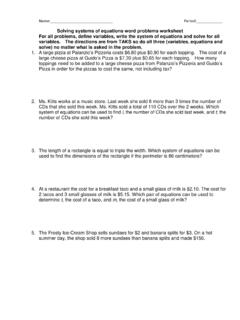
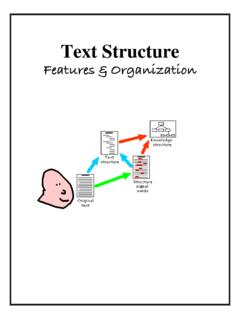
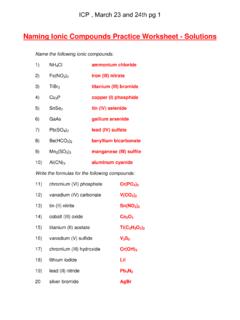
![[PDF] Differentiated Instruction PPT](/cache/preview/a/c/8/4/8/c/0/6/thumb-ac848c0658649db8874b31455869b542.jpg)

